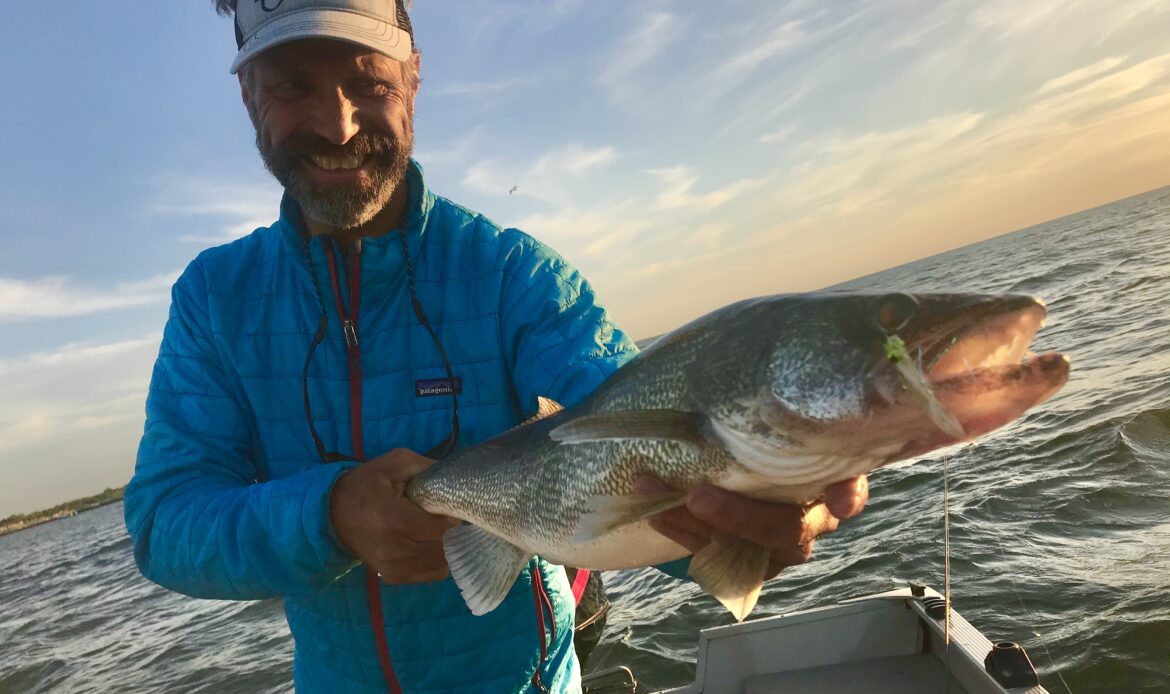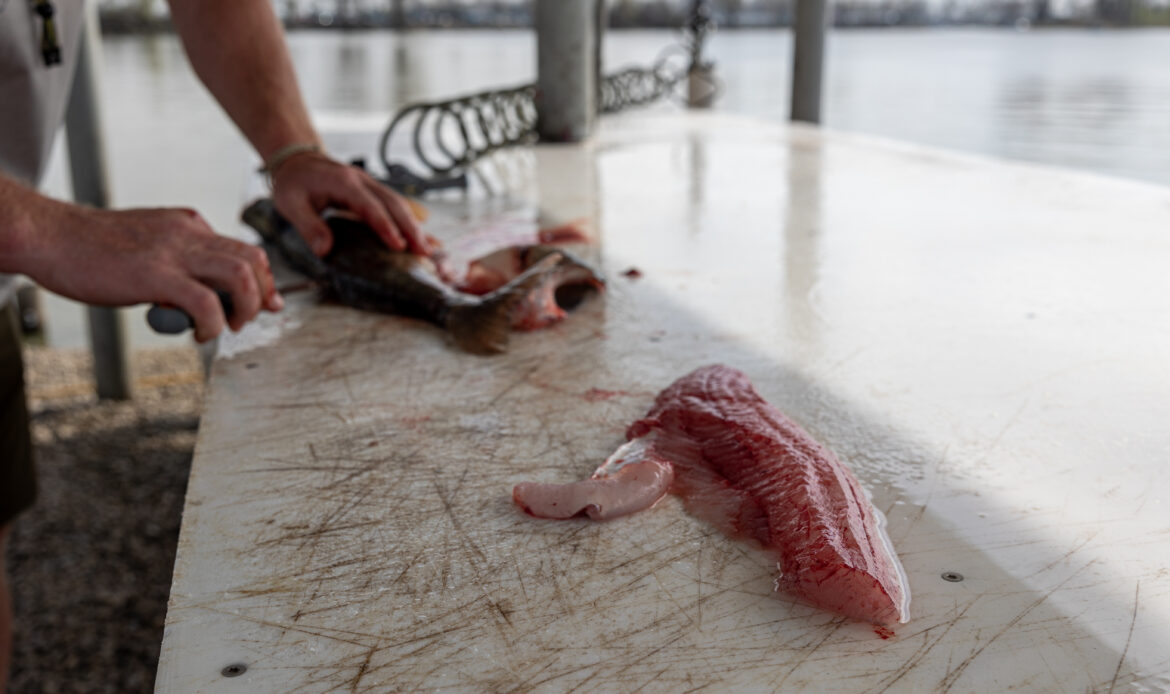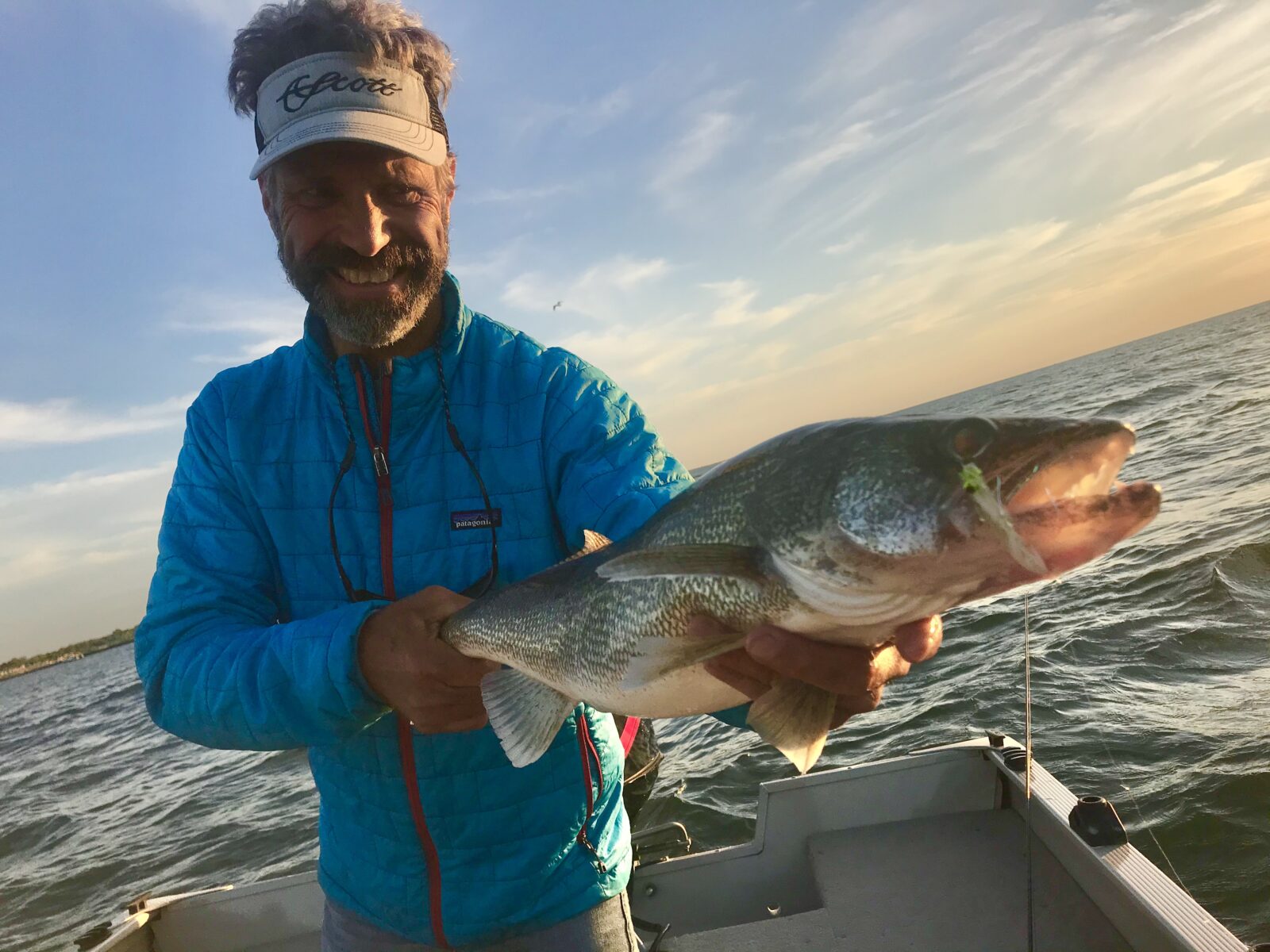These are the reasons why you should consider Lake Erie for your next fly fishing destination.
Walleye are not typically the target species when fly-fishing, nor is Ohio traditionally considered a “world-class” fly-fishing destination. But don’t tell that to Jeff Liskay (@greatlakesdude), owner, operator, head guide, and certified charter captain at Lake Erie’s Great Lakes Fly-Fishing: Walleye On The Fly.
Who Knew Ohio Could Be So Bold?
In the relatively cloistered bubble of Midwestern United States fly-fishing circles, Jeff Liskay’s fishiness and guiding prowess are legend. April Vokey described Liskay as one of the “most unknown and underrated anglers” she has ever had the privilege to fish with. When asked, “who the go-to was” for all things Great Lakes on the fly, without hesitation, Brian Fleschig of Mad River Outfitters pointed directly towards the “incredibly knowledgeable and kind” Jeff Liskay. Just for the record, he’s also got a great laugh.

A world-renowned fly-fisherman, ambassador, and advisor for companies like Patagonia and Scientific Anglers, Liskay began his fly-fishing journey at the age of 11 and has been guiding on Lake Erie and its surrounding waters for 40+ years. He appreciates and advocates for the diversity of fish available to fly anglers in Lake Erie: bass (both jaw sizes), musky, pike, carp, freshwater drum, catfish, and—though baffling to some—walleye. Originally a tournament walleye fisherman and licensed charter boat captain, Liskay has transitioned his business to fly-fishing-only guided trips. He is one of a select few “hardcore, full-tilt” guides chasing Great Lakes warm water fish exclusively on the fly.
Lake Erie or The Bahamas?
Perhaps to the chagrin of a few folks “way up north” (i.e., Minnesotans: where walleye is the state fish), Lake Erie—Port Clinton, Ohio to be exact—is undoubtedly the walleye capital of the planet. Some estimates claim over 100 million mature (2+ year old) walleye currently reside in the lake, and Liskay’s confident he can get most fly anglers a daily limit of six fish.

“I have a bunch of venues, but the most predictable is Lake Erie. I used to struggle to catch maybe one or two walleye on a trip, but since the population has exploded, we can nearly guarantee a limit of walleye on the fly.”
“Aesthetically, the western basin of Lake Erie looks more like the Bahamas than something you might find in Ohio,” Liskay claims. He wants his clients to go away from a day on the water, saying, “Was that really Ohio?” Unless they prefer to fish in urban backdrops, like Cleveland City Harbor, which can also provide excellent fishing and a more blue-collar view.
While the majority of his clients are regulars, he’s seeing more and more out-of-state anglers visiting Lake Erie as a bucket list, “box ticking” exercise. Since Covid, Liskay has noticed an increase in fly-fishing-specific traffic around Lake Erie and its major tributaries. He attributes the extra interest in the sport to flexibility in working schedules, allowing folks to prioritize time on the water.
Lake Erie Walleye Fly Tactics
Liskay’s best clients are typically saltwater anglers. The main difference between fly fishing in a salty sea and this inland sea is casting. On a saltwater trip, anglers make 30 – 100 casts a day. On Lake Erie, they’ll cast nonstop, all day, with no breaks (except for a fantastic lunch). His theory is simple: the more the fly is in the water, the better the chance of an angler catching a fish. Liskay is also quick to point out that even though there are tens of millions of walleye in the lake, catching one on the fly is no easy task. Liskay uses 7 – 10 weight rods with heavy sinking lines. The better the caster, the more opportunities for success. Liskay recommends anglers practice with weighted lines and have a double haul in their repertoire before heading out on a Lake Erie excursion. Due to their nocturnal nature, most trophy walleye (+27 inches) are caught on the fly after dark.
During the day, Liskay fishes 25’-30’ sinking heads with integrated running lines in the 250 – 400 grain range. The most active fish are generally in the top 15 feet of the water column, but he’ll sometimes have to get down as far as 20-35 feet to catch suspended fish. Anglers should expect 10 to 12-foot fluorocarbon leaders. Liskay finds success with a very fast vertical drop—instead of horizontal—stripping heavily weighted minnow flies up through the fish from beneath to trigger a reaction strike/bite. (Get the complete, unabridged, technical description here.)
Walleye Actually Fight?
Walleyes aren’t exactly known for heart-pounding, reel-screaming fights. Howard Tanner, the “father” of the Great Lakes salmon fishery, once compared reeling in a walleye to reeling in a wet sock. Liskay agrees with the statement when it comes to trolling—by far the most common method of walleye fishing on Lake Erie. Liskay contends that hooking a walleye on the fly is a completely different experience: “I would like to put that guy on the end of a seven-weight rod with a long 60 – 65 foot cast and hook a fish halfway in and then deal with that running line. I’ll bet ya’ he gets his ass handed to him. These fish are all jacked up, aggressive, mean, and fight like crazy. So yeah, I disagree with him.”
A New (Old) Frontier for American Fly Fishing
A full day with Liskay (two anglers) costs $500 and lasts up to 14 hours (prepare for a sore arm). This captain covers water—like really covers water, up to 62 miles round trip. He likes to fish Lake Erie’s shallow western basin (average depth of 26 ft), ripping across the tops of reefs and powering over boulder fields to find the most active fish. Anglers can expect to catch a multitude of species including catfish, freshwater drum, and smallmouth, in addition to walleye.

Lake Erie will never replace Belize, Argentina, Montana, or New Zealand as one of the top fly fishing destinations on the planet, but for Liskay and others, that’s part of the attraction. These are plentiful native fish swimming in a lake that’s arguably America’s greatest fishery recovery story. American fly anglers should recognize that the Great Lakes offer more than introduced steelhead and salmon. Our native warm water fish can also put a charge in your 8-weight, and walleye provide a nice bonus: delicious, sustainable white-meat fillets.



